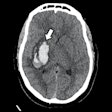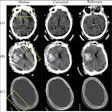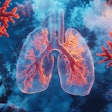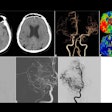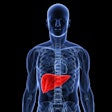Social factors influence whether patients who are found to have incidental lung nodules on chest CT imaging adhere to follow-up, according to research published March 8 in the Journal of the American College of Radiology.
And using a deep-learning model that incorporates demographic, socioeconomic, and nodule-related factors could help predict whether patients will comply with follow-up recommendations, wrote a team led by Zhuoyang Wang of the University of Pennsylvania in Philadelphia.
"Our study demonstrates that clinical context and socioeconomic factors can predict a patient’s incidental pulmonary nodule follow-up adherence across four different machine learning models, demonstrating the utility of artificial intelligence tools in improving patient management and outcomes, through predictive analytics and targeted health system-wide interventions," Wang and co-author Eduardo Barbosa Jr., MD, noted.
Incidental pulmonary nodules are common findings on chest CT, with a prevalence ranging from 25% to 51% among patients undergoing lung cancer screening, the team explained. Management of these incidental findings consists of noninvasive follow-up imaging or biopsy, and although most of these findings are benign, failure to follow up can lead to delayed diagnosis of disease and poorer patient outcomes.
Follow-up rates for incidental pulmonary nodules can be as low as 40%, the authors wrote, and it's important to understand why. To address the question, the two conducted a study that consisted of electronic health record data from 1,610 patients who underwent chest CT and were found to have incidental pulmonary nodules; the data included clinical and socioeconomic predictors and information about whether patients had adhered to follow-up. The team fitted and cross-validated four deep-learning models (multivariate logistic regression, random forest, neural network, and support vector machine) to the task of predicting patient compliance. The clinical and socioeconomic predictors included education levels, employment, income, insurance status, level of nodule risk, marital status, presence of comorbidities, race, sex, site of service (inpatient or emergency), and smoking status.
The investigators found the following:
- All predictors except the presence of comorbidities affected follow-up adherence.
- Inpatient or emergency clinical context (odds ratio predicting never following up: 7.28 for inpatient setting and 8.56 for emergency setting versus outpatient) and high nodule risk were the most significant predictors of follow-up.
- "Clinical context itself is associated with sex, race, insurance, employment, marriage, income, nodule risk, and smoking status, suggesting its role in mediating socioeconomic inequities," they wrote.
- All the deep learning models showed "comparable and good predictive performances," with mean area under the receiver operating curve (AUC) ranging from 0.76 to 0.8, sensitivity from 64% to 66%, and specificity from 77% to 84%.
Using AI in this targeted way shows promise for improving patient outcomes, according to Wang and Barbosa.
"Socioeconomic factors and clinical context are predictive of incidental pulmonary nodule follow-up adherence," they concluded.
The complete study can be found here.











